USQ NUR1102: Health Literacy and Communication in Healthcare
VerifiedAdded on 2022/12/23
|10
|701
|87
Presentation
AI Summary
This presentation focuses on health literacy and communication within healthcare, targeting nursing students. It emphasizes the importance of verbal and non-verbal communication strategies, including seminars, lectures, gestures, and facial expressions, to eliminate confusion and build relationships between patients and nurses. The presentation highlights the significance of incorporating a grief and loss framework, based on listening, empathy, and support, into patient care plans. It concludes that health literacy, encompassing both verbal and non-verbal communication, is crucial for healthcare professionals and patients, improving critical thinking, health literacy, and digital literacy. The presentation references several studies supporting these concepts.
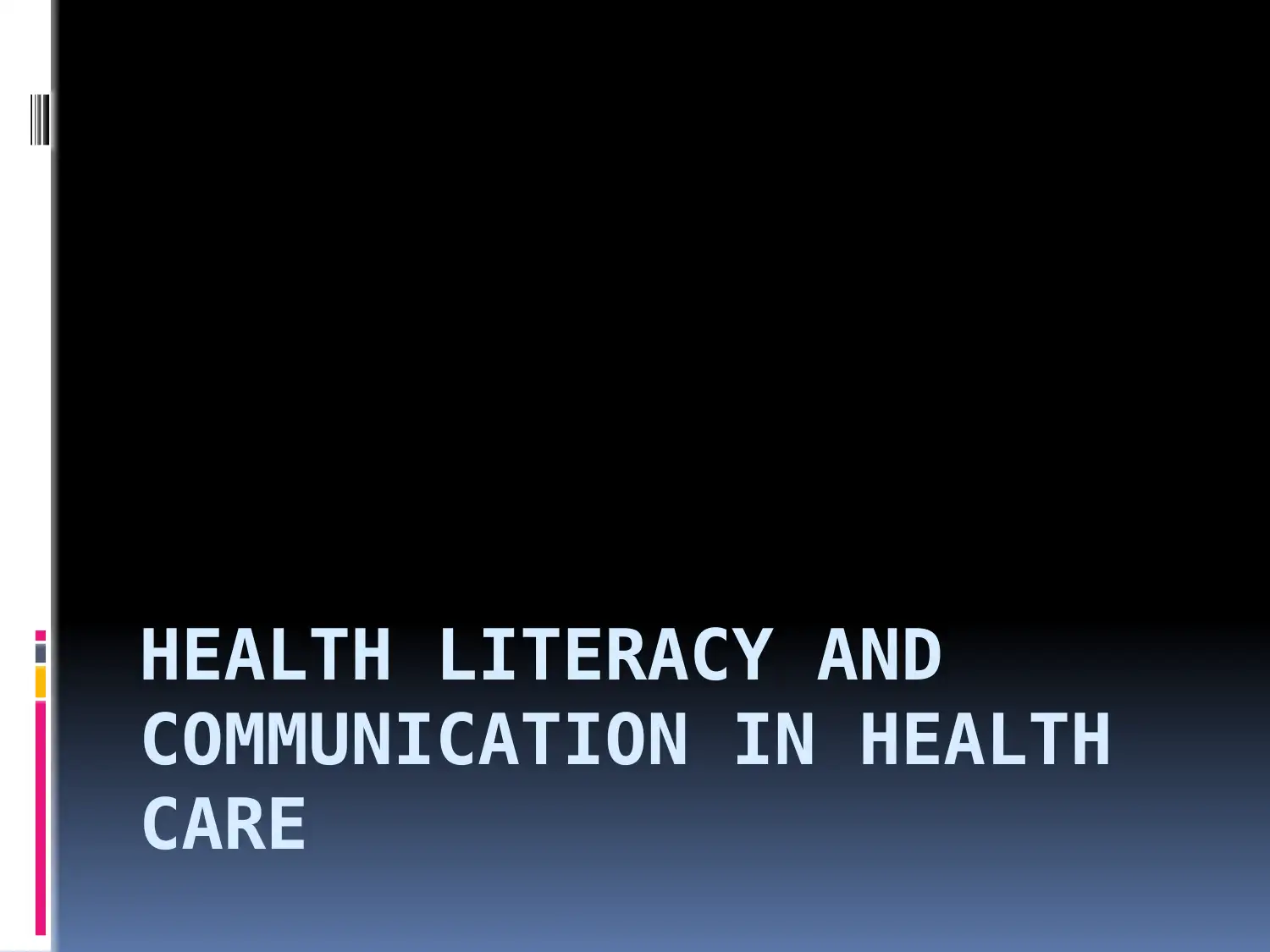
HEALTH LITERACY AND
COMMUNICATION IN HEALTH
CARE
COMMUNICATION IN HEALTH
CARE
Paraphrase This Document
Need a fresh take? Get an instant paraphrase of this document with our AI Paraphraser
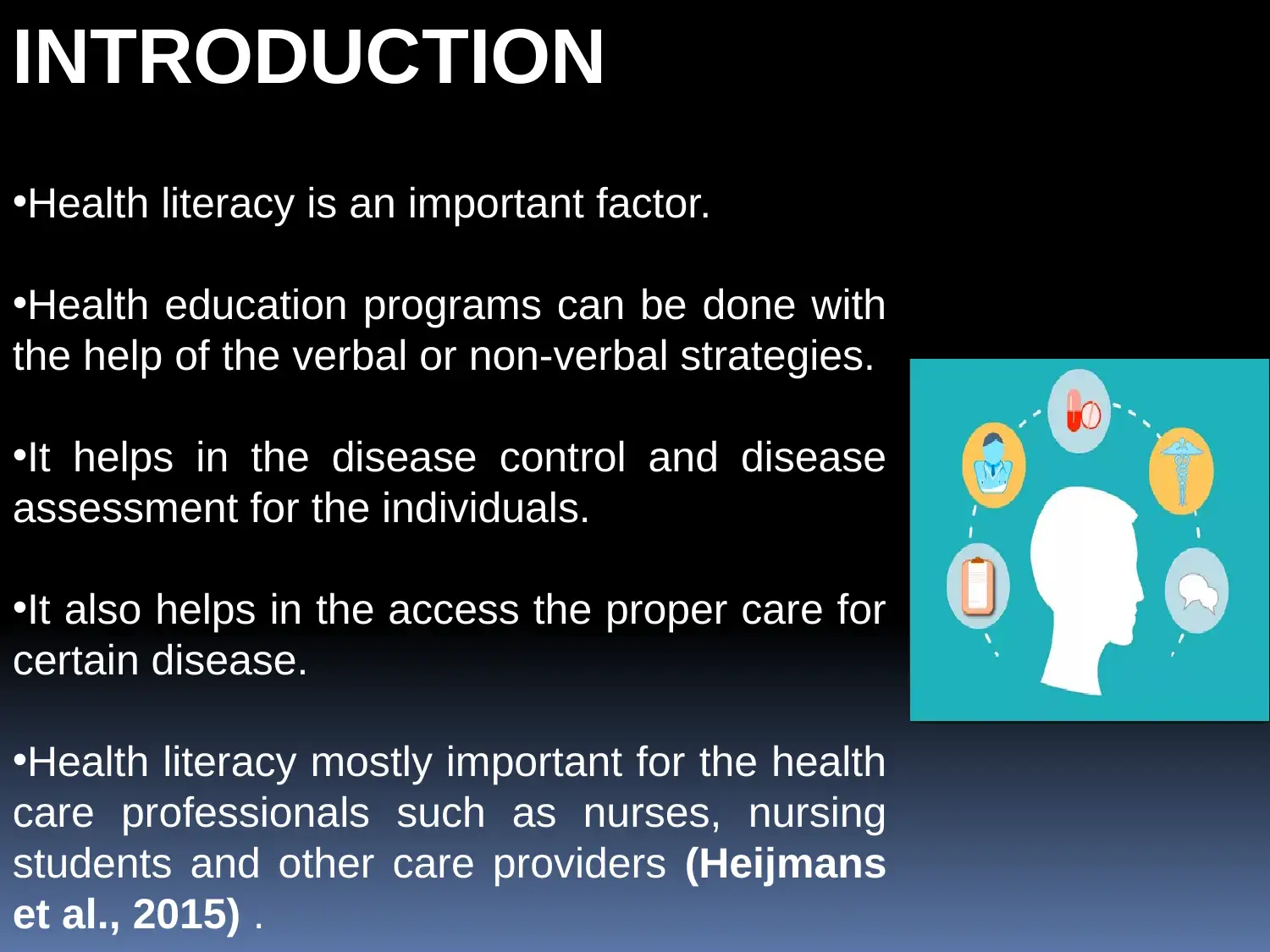
INTRODUCTION
•Health literacy is an important factor.
•Health education programs can be done with
the help of the verbal or non-verbal strategies.
•It helps in the disease control and disease
assessment for the individuals.
•It also helps in the access the proper care for
certain disease.
•Health literacy mostly important for the health
care professionals such as nurses, nursing
students and other care providers (Heijmans
et al., 2015) .
•Health literacy is an important factor.
•Health education programs can be done with
the help of the verbal or non-verbal strategies.
•It helps in the disease control and disease
assessment for the individuals.
•It also helps in the access the proper care for
certain disease.
•Health literacy mostly important for the health
care professionals such as nurses, nursing
students and other care providers (Heijmans
et al., 2015) .
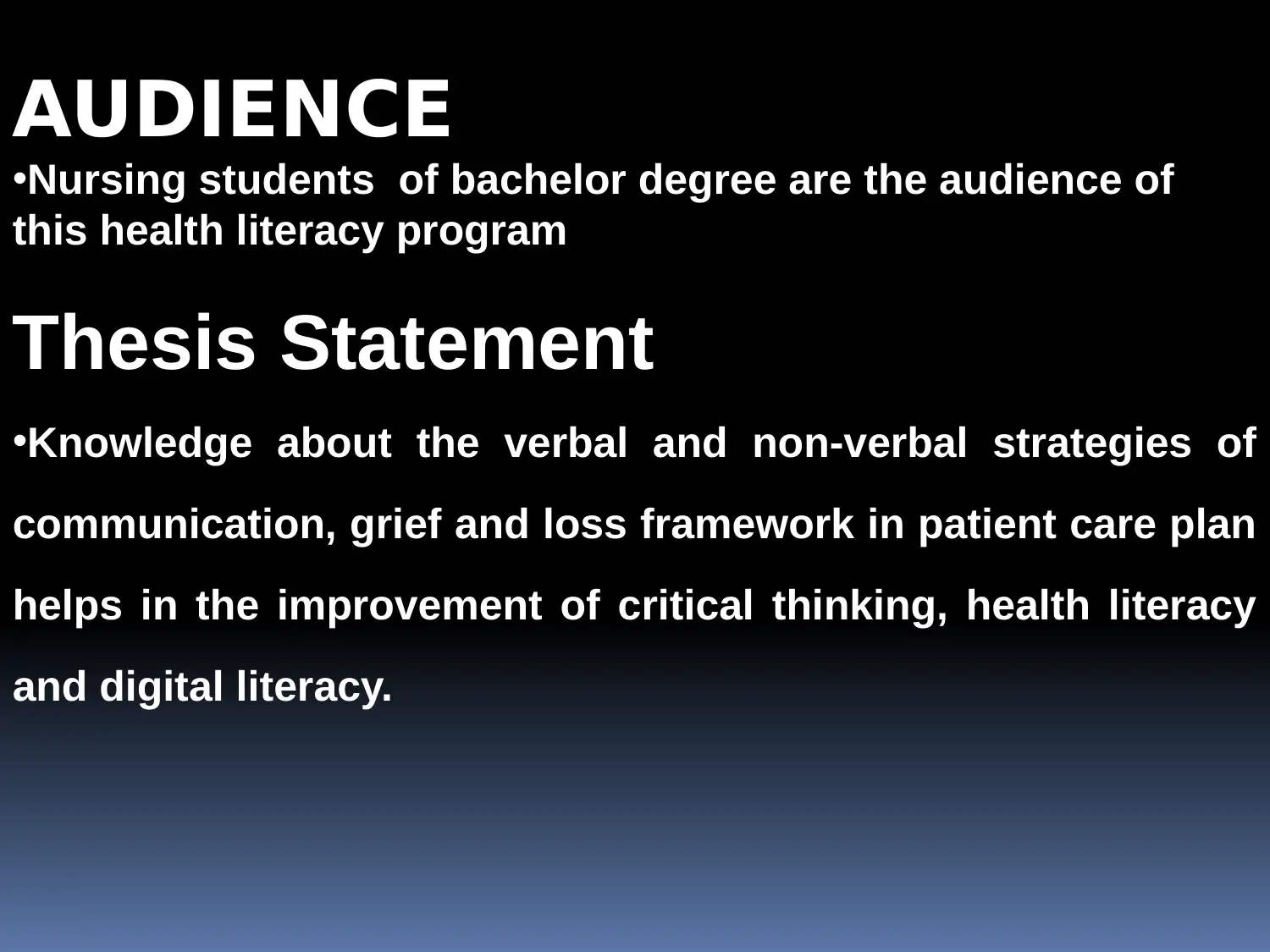
AUDIENCE
•Nursing students of bachelor degree are the audience of
this health literacy program
Thesis Statement
•Knowledge about the verbal and non-verbal strategies of
communication, grief and loss framework in patient care plan
helps in the improvement of critical thinking, health literacy
and digital literacy.
•Nursing students of bachelor degree are the audience of
this health literacy program
Thesis Statement
•Knowledge about the verbal and non-verbal strategies of
communication, grief and loss framework in patient care plan
helps in the improvement of critical thinking, health literacy
and digital literacy.
⊘ This is a preview!⊘
Do you want full access?
Subscribe today to unlock all pages.

Trusted by 1+ million students worldwide
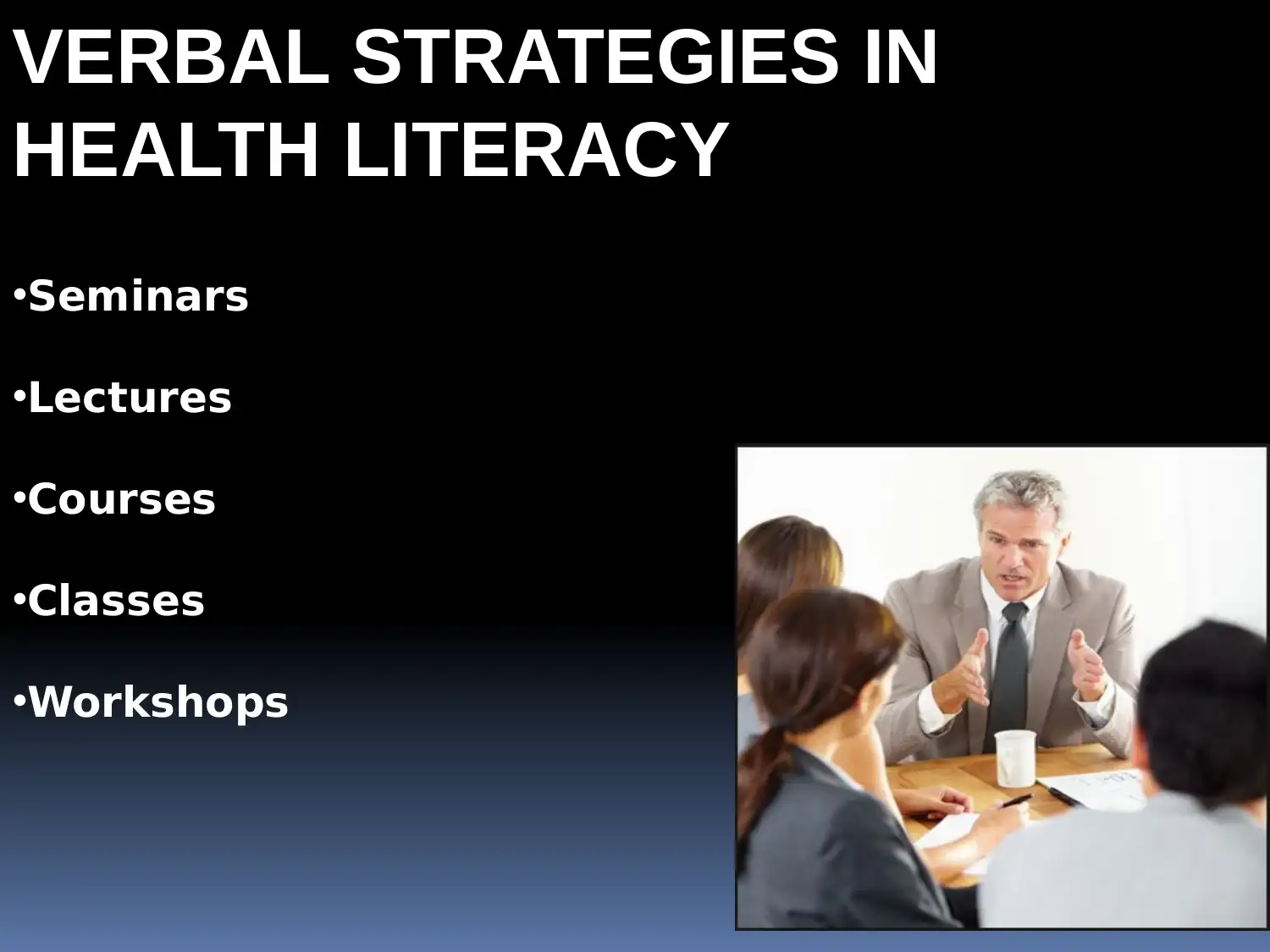
VERBAL STRATEGIES IN
HEALTH LITERACY
•Seminars
•Lectures
•Courses
•Classes
•Workshops
HEALTH LITERACY
•Seminars
•Lectures
•Courses
•Classes
•Workshops
Paraphrase This Document
Need a fresh take? Get an instant paraphrase of this document with our AI Paraphraser
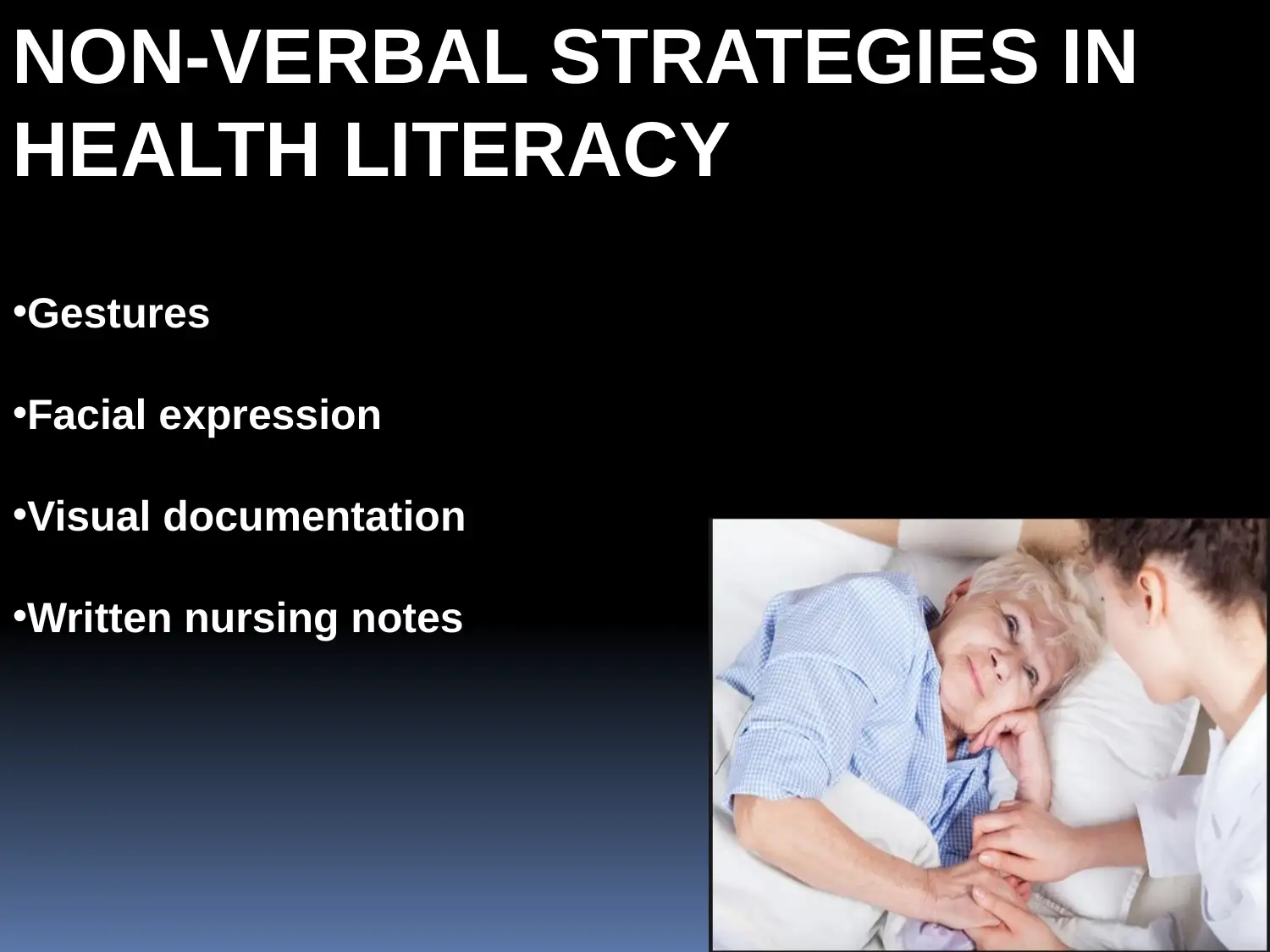
NON-VERBAL STRATEGIES IN
HEALTH LITERACY
•Gestures
•Facial expression
•Visual documentation
•Written nursing notes
HEALTH LITERACY
•Gestures
•Facial expression
•Visual documentation
•Written nursing notes
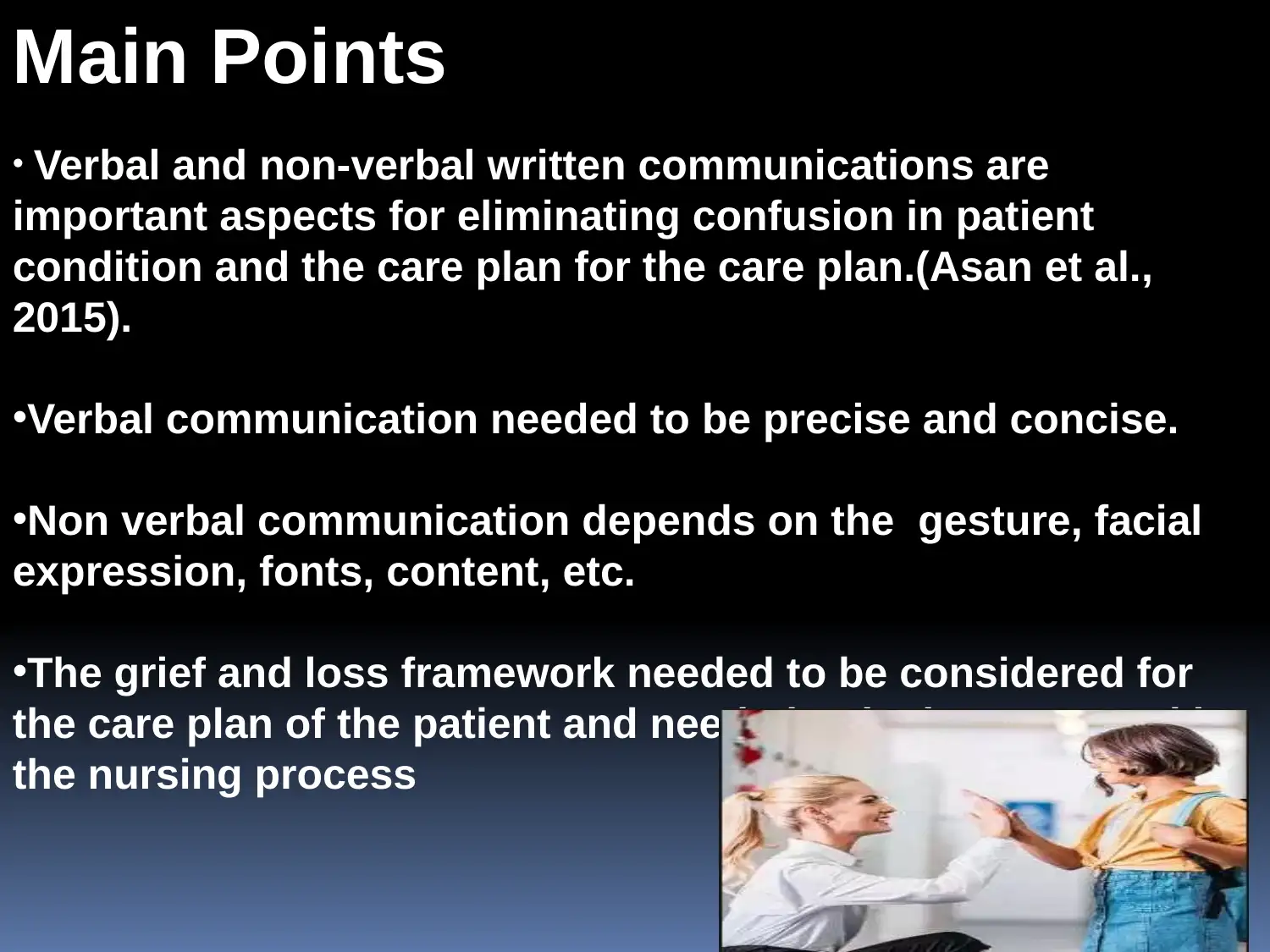
Main Points
• Verbal and non-verbal written communications are
important aspects for eliminating confusion in patient
condition and the care plan for the care plan.(Asan et al.,
2015).
•Verbal communication needed to be precise and concise.
•Non verbal communication depends on the gesture, facial
expression, fonts, content, etc.
•The grief and loss framework needed to be considered for
the care plan of the patient and needed to be incorporated in
the nursing process
• Verbal and non-verbal written communications are
important aspects for eliminating confusion in patient
condition and the care plan for the care plan.(Asan et al.,
2015).
•Verbal communication needed to be precise and concise.
•Non verbal communication depends on the gesture, facial
expression, fonts, content, etc.
•The grief and loss framework needed to be considered for
the care plan of the patient and needed to be incorporated in
the nursing process
⊘ This is a preview!⊘
Do you want full access?
Subscribe today to unlock all pages.

Trusted by 1+ million students worldwide
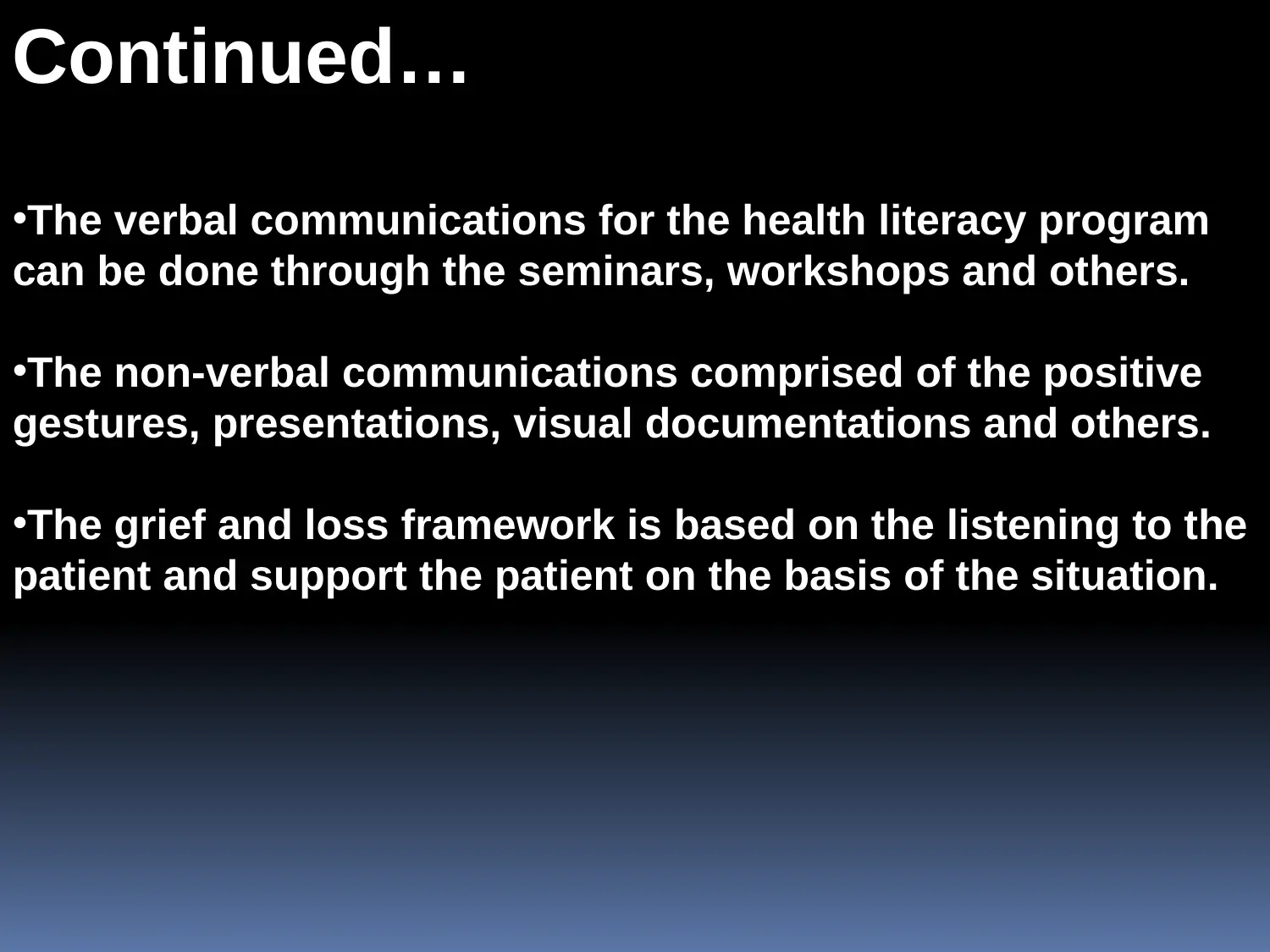
Continued…
•The verbal communications for the health literacy program
can be done through the seminars, workshops and others.
•The non-verbal communications comprised of the positive
gestures, presentations, visual documentations and others.
•The grief and loss framework is based on the listening to the
patient and support the patient on the basis of the situation.
•The verbal communications for the health literacy program
can be done through the seminars, workshops and others.
•The non-verbal communications comprised of the positive
gestures, presentations, visual documentations and others.
•The grief and loss framework is based on the listening to the
patient and support the patient on the basis of the situation.
Paraphrase This Document
Need a fresh take? Get an instant paraphrase of this document with our AI Paraphraser
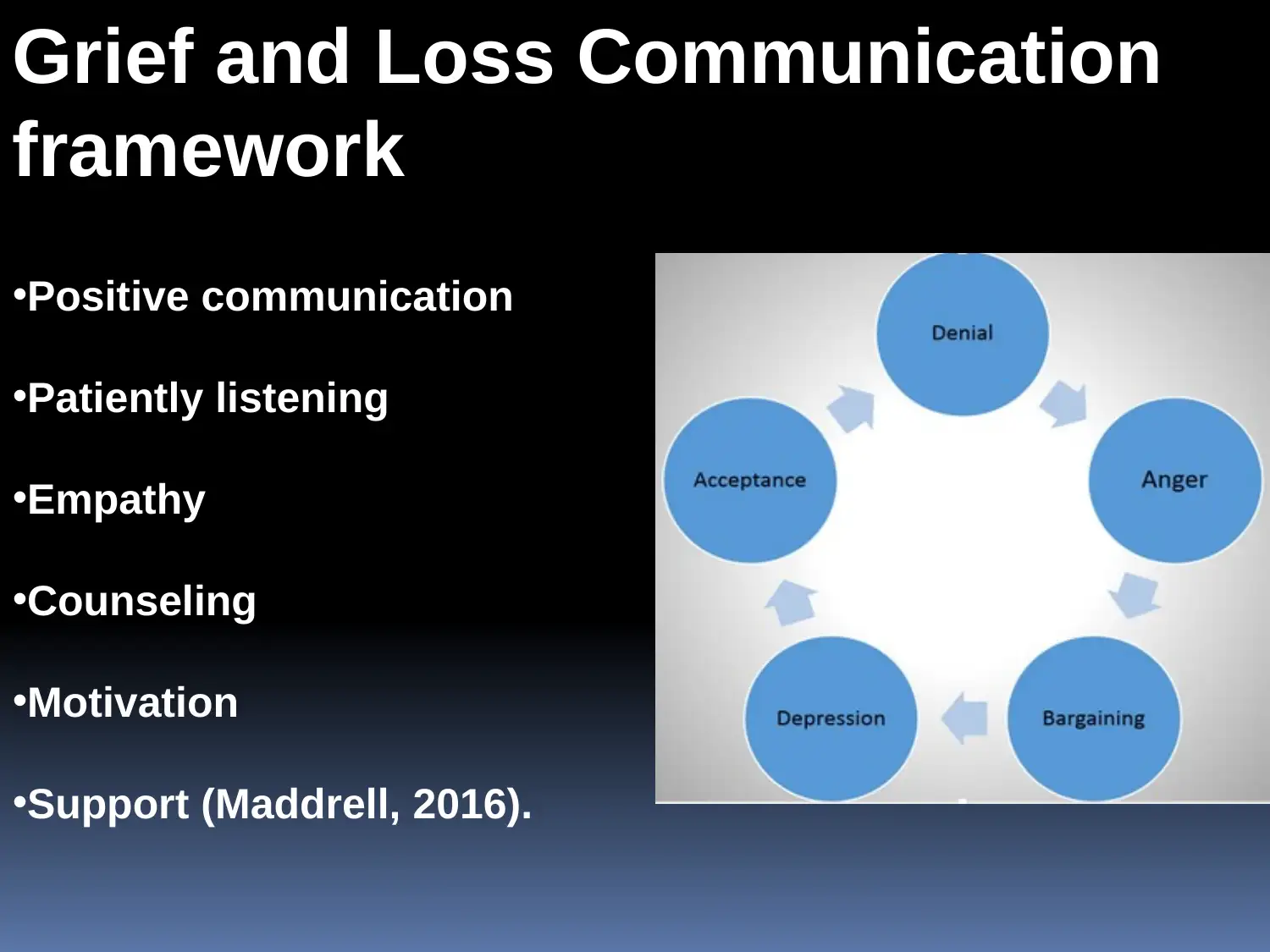
Grief and Loss Communication
framework
•Positive communication
•Patiently listening
•Empathy
•Counseling
•Motivation
•Support (Maddrell, 2016).
framework
•Positive communication
•Patiently listening
•Empathy
•Counseling
•Motivation
•Support (Maddrell, 2016).
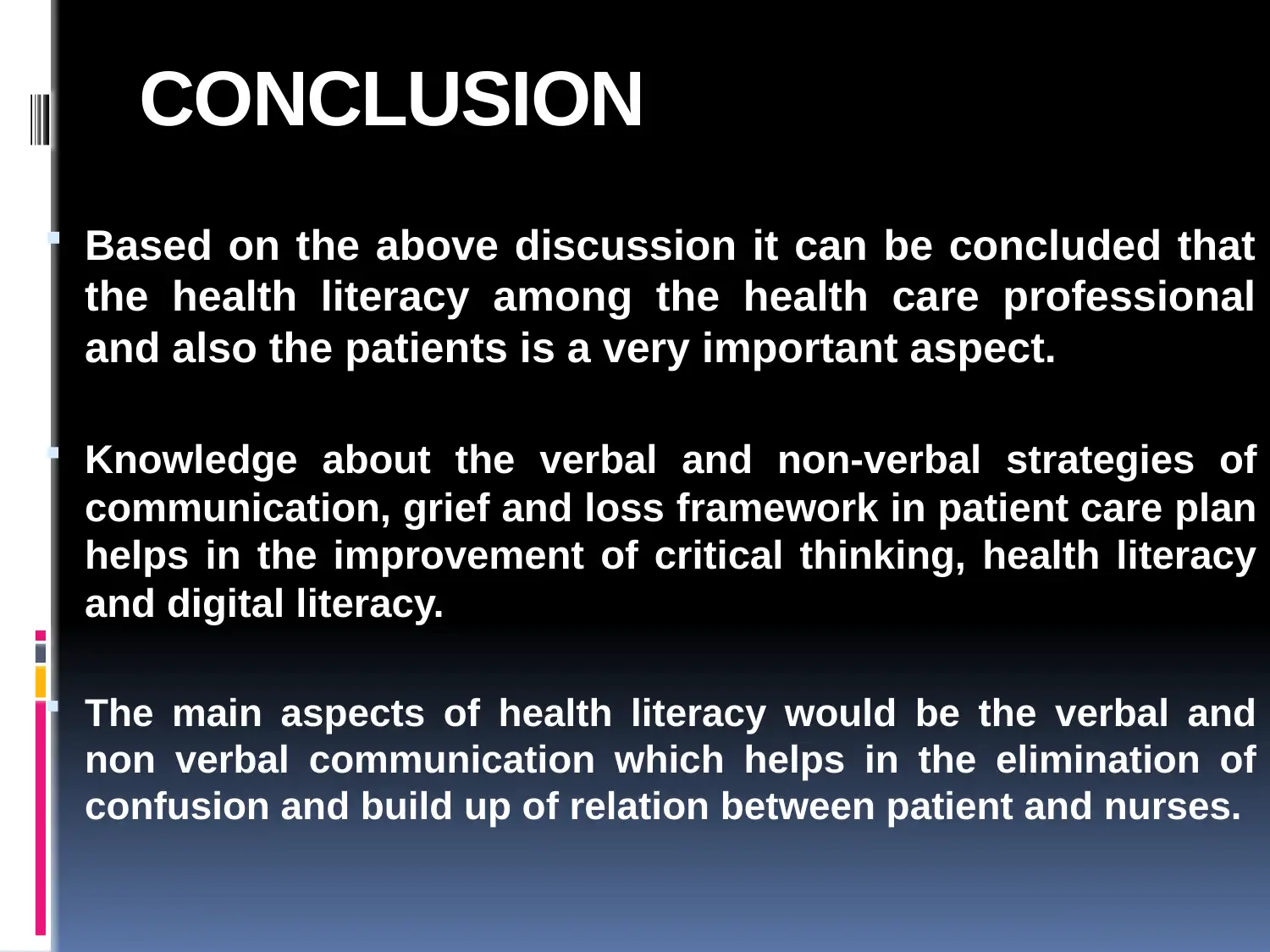
CONCLUSION
Based on the above discussion it can be concluded that
the health literacy among the health care professional
and also the patients is a very important aspect.
Knowledge about the verbal and non-verbal strategies of
communication, grief and loss framework in patient care plan
helps in the improvement of critical thinking, health literacy
and digital literacy.
The main aspects of health literacy would be the verbal and
non verbal communication which helps in the elimination of
confusion and build up of relation between patient and nurses.
Based on the above discussion it can be concluded that
the health literacy among the health care professional
and also the patients is a very important aspect.
Knowledge about the verbal and non-verbal strategies of
communication, grief and loss framework in patient care plan
helps in the improvement of critical thinking, health literacy
and digital literacy.
The main aspects of health literacy would be the verbal and
non verbal communication which helps in the elimination of
confusion and build up of relation between patient and nurses.
⊘ This is a preview!⊘
Do you want full access?
Subscribe today to unlock all pages.

Trusted by 1+ million students worldwide
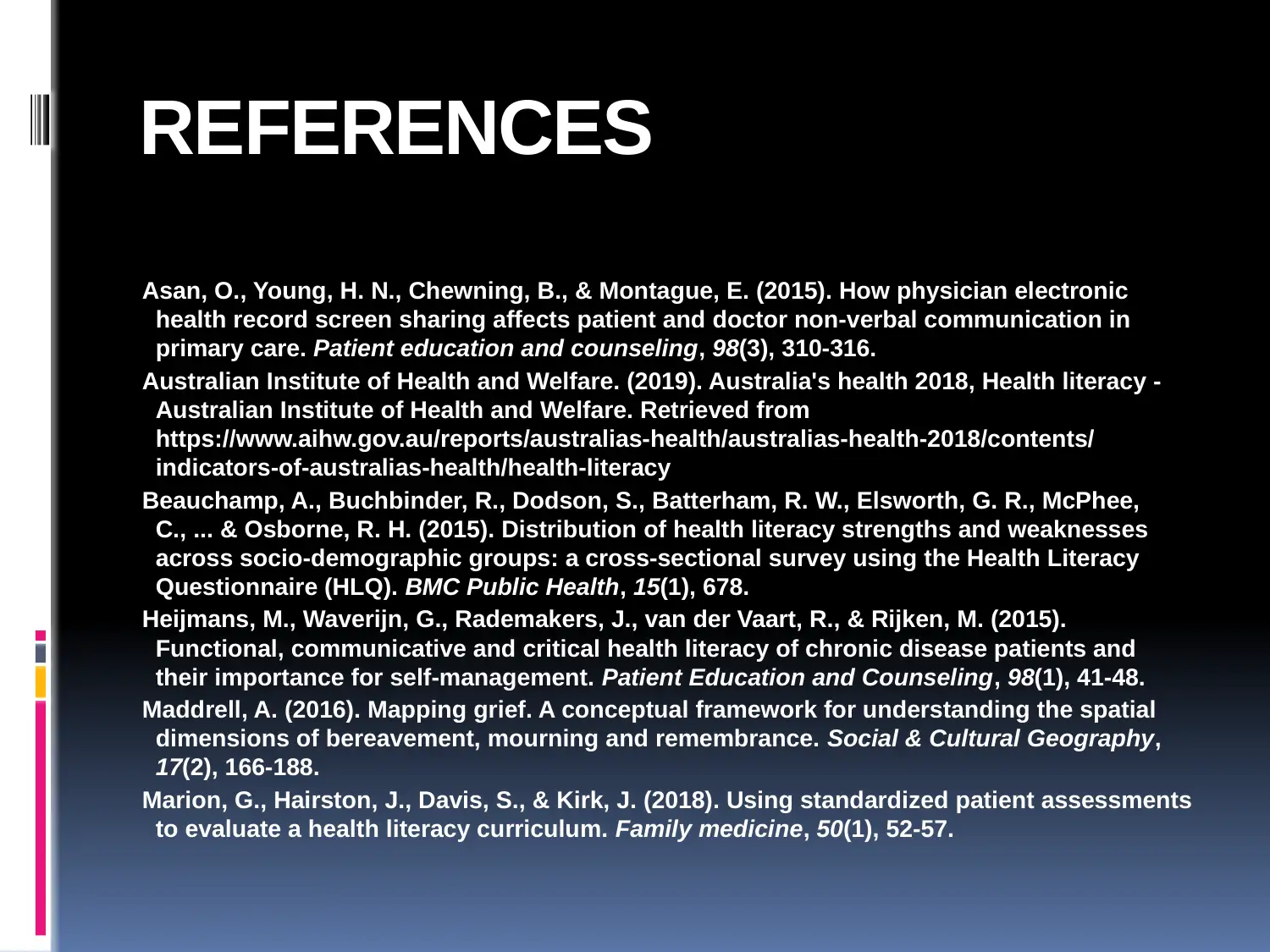
REFERENCES
Asan, O., Young, H. N., Chewning, B., & Montague, E. (2015). How physician electronic
health record screen sharing affects patient and doctor non-verbal communication in
primary care. Patient education and counseling, 98(3), 310-316.
Australian Institute of Health and Welfare. (2019). Australia's health 2018, Health literacy -
Australian Institute of Health and Welfare. Retrieved from
https://www.aihw.gov.au/reports/australias-health/australias-health-2018/contents/
indicators-of-australias-health/health-literacy
Beauchamp, A., Buchbinder, R., Dodson, S., Batterham, R. W., Elsworth, G. R., McPhee,
C., ... & Osborne, R. H. (2015). Distribution of health literacy strengths and weaknesses
across socio-demographic groups: a cross-sectional survey using the Health Literacy
Questionnaire (HLQ). BMC Public Health, 15(1), 678.
Heijmans, M., Waverijn, G., Rademakers, J., van der Vaart, R., & Rijken, M. (2015).
Functional, communicative and critical health literacy of chronic disease patients and
their importance for self-management. Patient Education and Counseling, 98(1), 41-48.
Maddrell, A. (2016). Mapping grief. A conceptual framework for understanding the spatial
dimensions of bereavement, mourning and remembrance. Social & Cultural Geography,
17(2), 166-188.
Marion, G., Hairston, J., Davis, S., & Kirk, J. (2018). Using standardized patient assessments
to evaluate a health literacy curriculum. Family medicine, 50(1), 52-57.
Asan, O., Young, H. N., Chewning, B., & Montague, E. (2015). How physician electronic
health record screen sharing affects patient and doctor non-verbal communication in
primary care. Patient education and counseling, 98(3), 310-316.
Australian Institute of Health and Welfare. (2019). Australia's health 2018, Health literacy -
Australian Institute of Health and Welfare. Retrieved from
https://www.aihw.gov.au/reports/australias-health/australias-health-2018/contents/
indicators-of-australias-health/health-literacy
Beauchamp, A., Buchbinder, R., Dodson, S., Batterham, R. W., Elsworth, G. R., McPhee,
C., ... & Osborne, R. H. (2015). Distribution of health literacy strengths and weaknesses
across socio-demographic groups: a cross-sectional survey using the Health Literacy
Questionnaire (HLQ). BMC Public Health, 15(1), 678.
Heijmans, M., Waverijn, G., Rademakers, J., van der Vaart, R., & Rijken, M. (2015).
Functional, communicative and critical health literacy of chronic disease patients and
their importance for self-management. Patient Education and Counseling, 98(1), 41-48.
Maddrell, A. (2016). Mapping grief. A conceptual framework for understanding the spatial
dimensions of bereavement, mourning and remembrance. Social & Cultural Geography,
17(2), 166-188.
Marion, G., Hairston, J., Davis, S., & Kirk, J. (2018). Using standardized patient assessments
to evaluate a health literacy curriculum. Family medicine, 50(1), 52-57.
1 out of 10
Related Documents
Your All-in-One AI-Powered Toolkit for Academic Success.
+13062052269
info@desklib.com
Available 24*7 on WhatsApp / Email
![[object Object]](/_next/static/media/star-bottom.7253800d.svg)
Unlock your academic potential
Copyright © 2020–2025 A2Z Services. All Rights Reserved. Developed and managed by ZUCOL.





